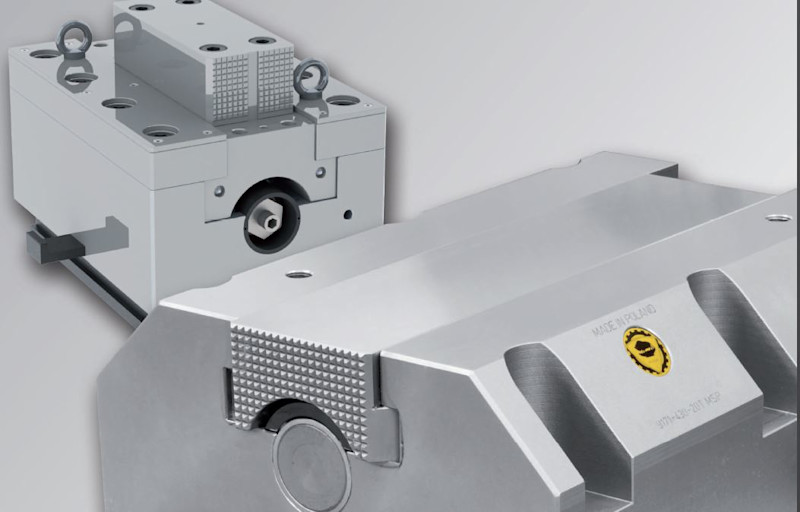In today’s ultra-competitive manufacturing industry, planning workholding in conjunction with a machine tool purchase has become more important than ever. Gone are the days of ordering a machine, having it installed, and then mounting whatever workholding is laying around the shop on the machine.
Machine tools are a manufacturer’s most important investment outside of good employees, but it is only a portion of the equation. A machine tool is only as productive as the workholding that is used. The importance of proper workholding should not be underestimated. The right workholding takes the machine tool from good to great, allowing it to work to its full potential.
Advantages
Faster set-up times allow the machine tool to be used for more hours of the day. Every manufacturer knows that if you aren’t making chips, you aren’t making money.
Reduction in cycle time per part can be reached by presenting multiple parts at a time to the tool thus increasing throughput.
Reduces scrap parts because quality workholding is repeatable and clamps a part rigidly and accurately, ultimately leading to improved profitability.
Proper workpiece clamping and presentation to the tool can lead to more operations in one clamping. This reduces part handling and increases accuracy resulting in increased throughput and improved part quality.
Automated workholding makes it possible to achieve faster and consistent part loading leading to higher quality parts, as well as reduction in machine downtime.
Workholding is flexible and doesn’t have to be dedicated. Modern workholding allows multiple part types to be clamped with the same base workholding system. This increases machine capabilities and the ability to take on other profitable jobs.
Consider two competing manufacturers with the same model machine. The machines are identical but their performances are not. What makes one more cost-effective and productive than the other?
The difference is in the process. Advancements in workholding technology have made it possible to greatly improve a process, yielding superior results compared to an identical machine without the technology. The proper workholding can be the difference in profitability and winning that next job.
Workholding affects a great number of areas in the manufacturing process, though its importance is too often overlooked. Improving the process in any or all these areas can lead to lower production costs and more machine tool uptime, which is ultimately what every manufacturer is chasing.
The next time you purchase that new, faster, higher accuracy, more complex CNC machine tool for hundreds of thousands of dollars, look at the whole process and consider what the proper, much smaller workholding investment could do for your company’s bottom line.
It is a small part of the overall process but it can make a large impact on your business. Reach out to one of our industry’s many workholding experts to learn more about the positive impact it can make on your manufacturing process.
Start your workholding research now. Visit the IMTS 2018 website. To see who is exhibiting, type in "workholding" on the IMTS 2018 exhibitor search page. Visit their web pages to compare and contrast and make plans to meet them at IMTS 2018, which will be held September 10-15, 2018, at McCormick Place, in Chicago. Ill.






